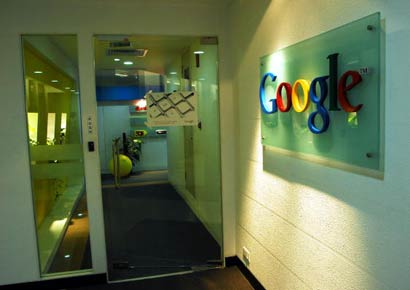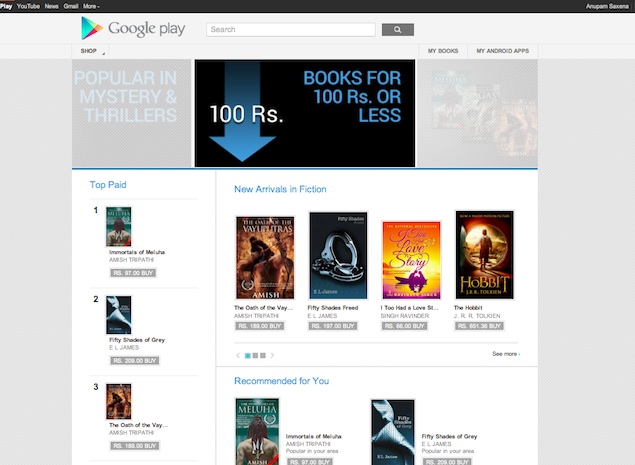Google has retaken the role of superstar of the tech sector with a stunning stock rally as rival Apple flounders.
Google has hit fresh all-time highs in recent weeks, and closed Friday
at $831.52, capping a nearly tenfold rise from its public offering price
in 2004 of $85. The stock is up about 17 percent so far in 2013.
Part of the explanation comes from the rise of its Android
mobile operating system, at the expense of Apple. Android is free but
gives Google the opportunity to deliver more services and ads to users.
"The negativity that is surrounding Apple at the moment is giving
positivity to Google," said Gartner analyst Carolina Milanesi.
Apple, which traded as high as $700 last year, has slumped more than 35 percent and ended Friday at $431.67.
For Google, "there's a lot going forward at the moment," Milanesi told
AFP, noting that the company is successfully "getting consumers into
their ecosystem."
Google now appears poised to beat Apple to the symbolic level of a $1,000 share price, say some analysts.
Analysts at Jefferies said Google set a price target for Google at
$1,000, saying it has been benefiting from a wide range of services
beyond its traditional web search ads, including shopping and mobile
ads.
"Google looks well positioned for growth with the number one
market share in large, rapidly growing markets," said Jefferies analyst
Peter Misek, who noted that Google remains the top internet search
engine and leading advertising platform.
Android now has a 70
percent share of the smartphone market, which "ensures that Google
retains a large share of the mobile search market," said the research
firm Trefis.
"Another reason that investors are excited about
Google's stock is the fact that more than 50 percent of its revenues are
generated from markets outside the United States," Trefis said in a
note.
"This means that Google's revenues have ample exposure to
Asia, Africa and Latin America, all of which are expected to grow at an
accelerated pace over the next few years."
Analysts say a shift
to the mobile internet is positive for Google, which is also producing
its own hardware, including smartphones and tablets.
"We are more
constructive (less fearful) on Google's ability to maintain strong
growth during the mobile usage shift, and we see opportunity for revenue
acceleration," said Bank of America's Justin Post.
Google has
been able to tweak its AdWords software, which delivers commercial
messages based on a user's profile, to squeeze more revenues from mobile
than it has until now, analysts say.
Google is also starting to see potential for YouTube, the video sharing service that has produced little revenue until now.
The Mountain View, California company has been working on other
projects, including its own high-end Chromebook Pixel laptop computer
and Google Glass, the wearable device expected later this year.
Milanesi said that Google will not try to replicate Apple by getting a lot of revenue from hardware.
"Hardware is serving their services," she said.
One sore spot for Google is its Motorola Mobility unit, the mobile phone maker acquired for $12.5 billion. Some 1,200 jobs are being cut at the division after 4,000 last year.
"Google needs to figure out what to do with Motorola," said Trip
Chowdhry at Global Equities Research, claiming that Motorola "hasn't had
a single hit" in recent years.
"Within six months, Google needs
to take a hard look at Motorola. If they can't deliver, the whole
Motorola should be closed and shut forever."
Chowdhry noted that
Google could see its momentum slowed by regulatory problems, even though
it avoided antitrust action in the United States.
Google is under scrutiny on privacy and monopoly grounds in Europe, and China is also concerned about Android's dominance.
"When you grow so big, you get in the eyes of all regulators and antitrust authorities," the analyst said.
"So far Google has been very smart, quite good at dealing with them,"
Chowdhry added, noting however that this was "an ongoing concern."







